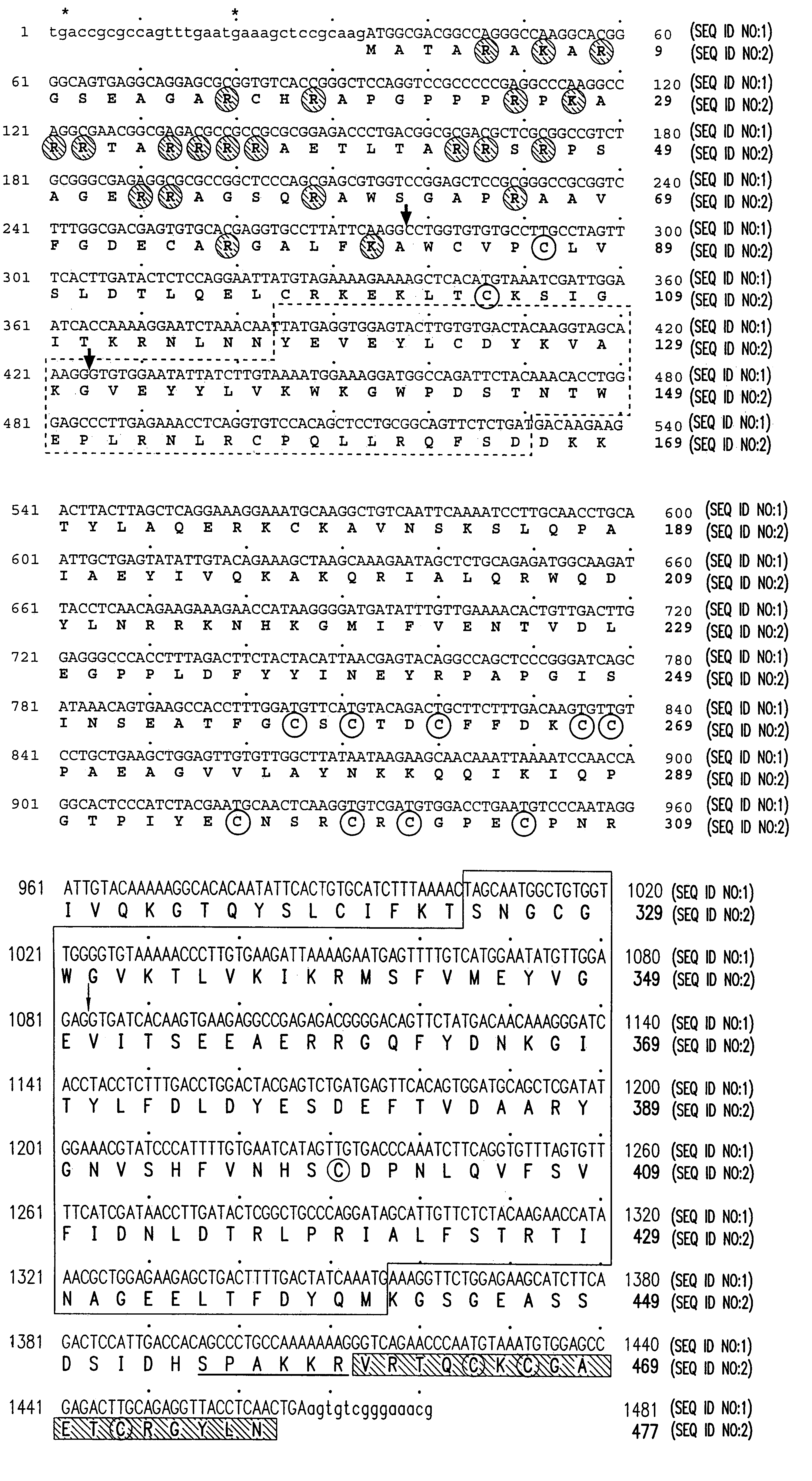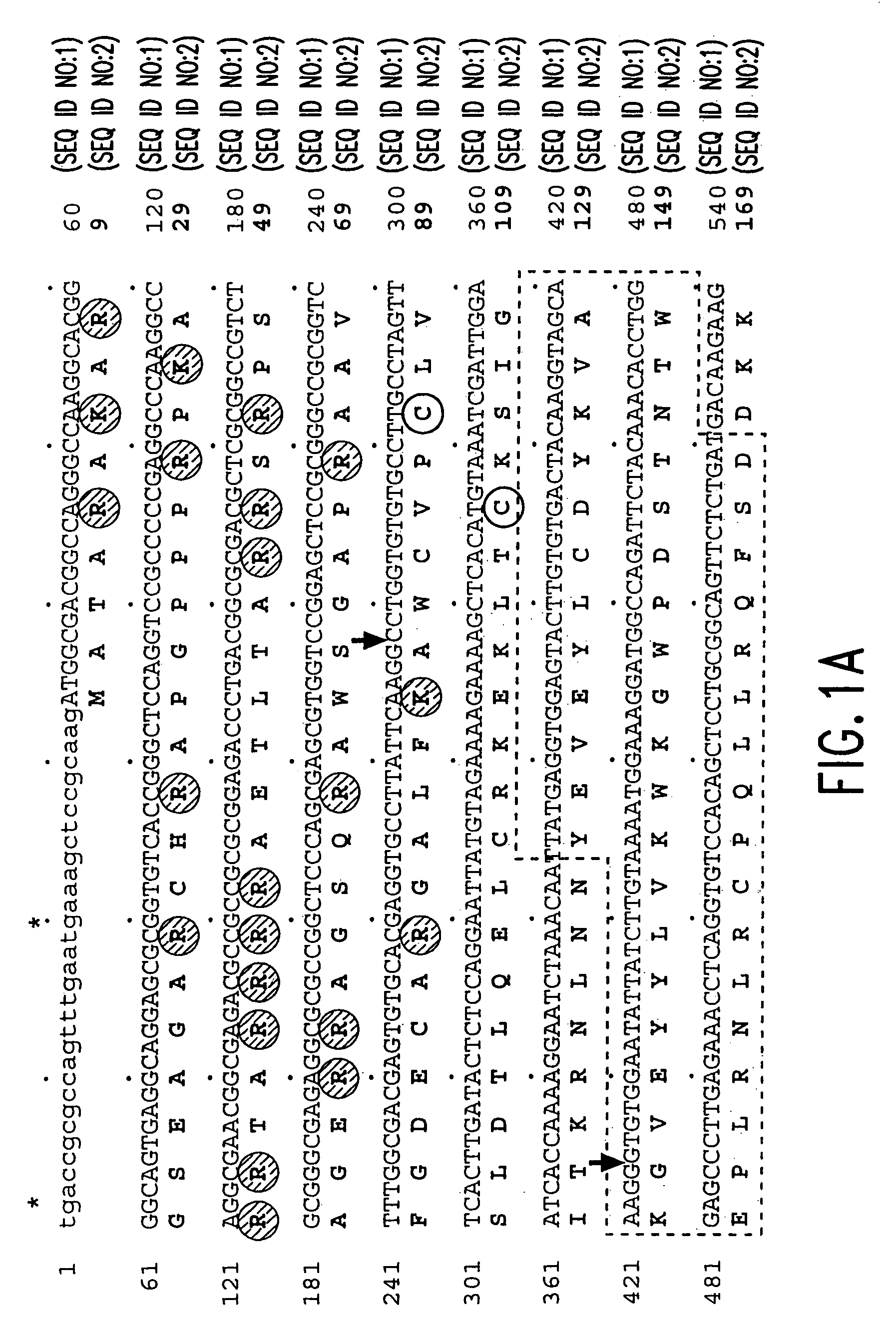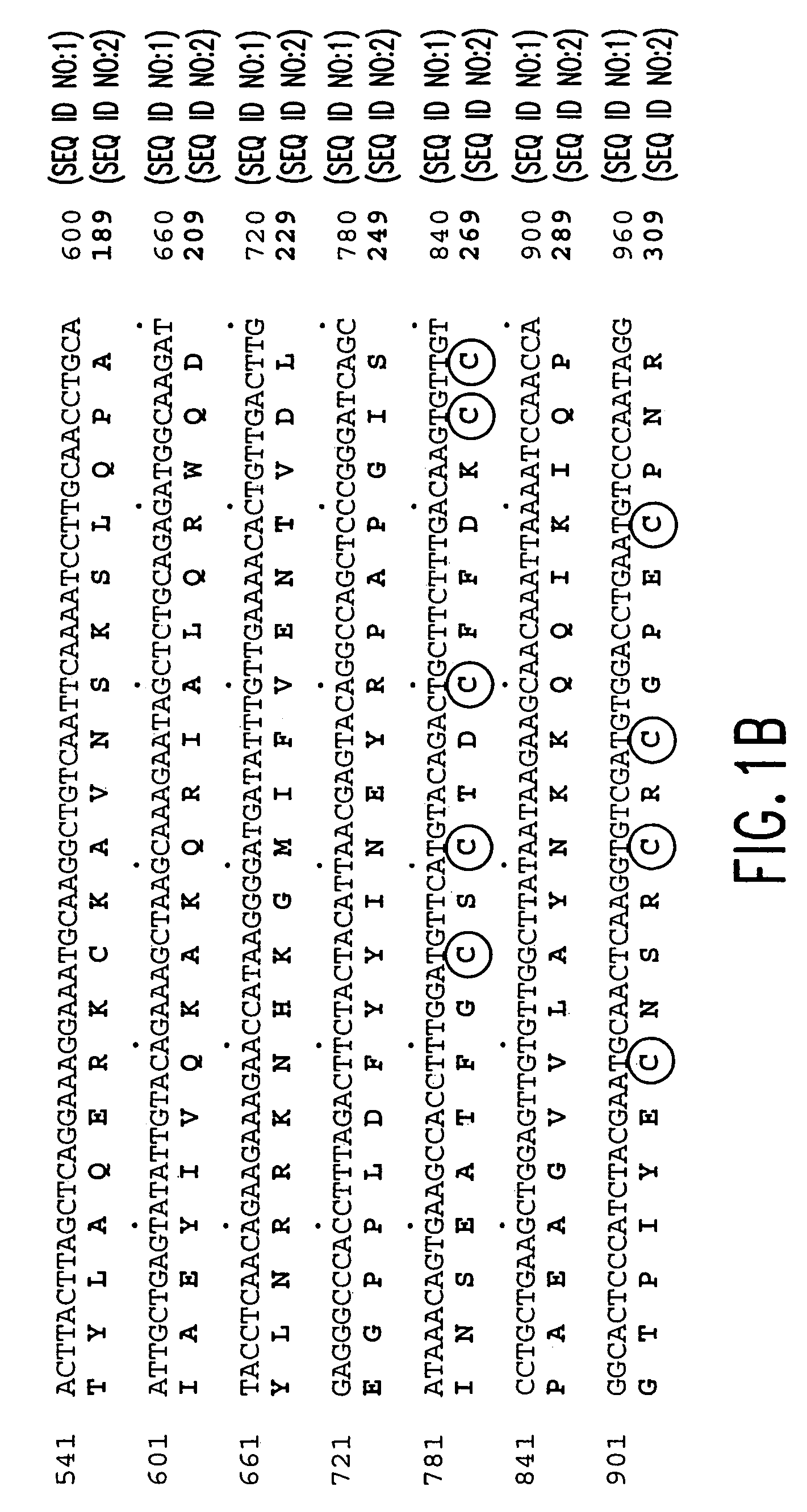Mammalian SUV39H2 proteins and isolated DNA molecules encoding them
a technology of dna molecules and proteins, applied in the field of mammalian suv39h2 proteins and dna molecules encoding them, can solve the problems of preventing successful formation of this specialised chromatin structure in the xy body, and achieve the effect of enhancing suv39h2 hmtase activity and less pron
- Summary
- Abstract
- Description
- Claims
- Application Information
AI Technical Summary
Benefits of technology
Problems solved by technology
Method used
Image
Examples
example 1
The Coding Part and Conceptional Reading Frame of the Suv39h2 cDNA
[0138]To identify additional mammalian Su(var)3-9 homologues, sequence similarity searches (Bassett et al., 1995; Altschul et al., 1997) with the murine Suv39h1 or human SUV39H1 cDNAs (Aagaard et al., 1999) revealed the presence of related, yet distinct expressed sequence tags (ESTs) in DDBJ / EMBL / GenBank databases. In particular, the mouse ESTs fall into two categories that are either homologous to Suv39h1 / SUV39H1 or indicative of a second mammalian Su(var)3-9 homologue. Using oligonucleotides specific for this second class of Suv39h-ESTs, an internal (lacking the conserved chromo and SET domain sequences) DNA probe was PCR-amplified from murine cDNAs and screened against a mouse embryonic day 11.5 cDNA library (see Materials and Methods). Out of six positive isolates, the longest insert was subcloned and sequenced, revealing a nearly full-length open reading frame which comprises the chromo and the C-terminal SET dom...
example 2
Conserved Domains of S.pombe, C.elegans, Drosophila and Murine SU(VAR)3-9 Related Proteins
[0140]Over the length of the 477 amino acids protein (SEQ ID NO:2), Suv39h2 is 59% identical to Suv39h1 (412 amino acids; (Aagaard et al., 1999)). Suv39h2 contains a highly basic (20.7%) N-terminal extension of 82 amino acids that is not present in Suv39h1, although a very basic N-terminus is also found in the C15H11.5 ORF. In addition to its obvious resemblance with protamines, the Suv39h2 N-terminus shows moderate sequence identity (23.2%) with the C-terminal half of the linker histone H1 that is not restricted to basic residues. With the exception of this extended N-terminus, Suv39h2 maintains all other conserved domains outlined previously for Suv39h1 (Aagaard et al., 1999). For example, both proteins display highest identity in the 130 amino acid SET domain core (75.2%) and at the conspicuous C-terminal tail (69.6%) with its three conserved cysteine residues. Highly identical is also the 6...
example 3
Expression of Suv39h1 and Suv39h2 During Mouse Development
[0142]Abundant Suv39h2-specific transcripts are present in ES-cells, in in vitro differentiated embryoid bodies (EB) and between day E10.5-day E15.5, with embryonic expression peaking around day E10.5. In contrast, Suv39h2 transcripts are substantially down-regulated at day E17.5 and are nearly absent during postnatal development. A very similar dynamic expression profile was also observed for Suv39h1, with the exception that the relative abundance of Suv39h1 transcripts in ES-cells and embryoid bodies is reduced as compared to Suv39h2 transcripts (FIG. 3, top panel). To investigate the spatial expression profiles of Suv39h2 and Suv39h1, whole-mount in-situ hybridisations with Suv39h2- and Suv39h1-specific riboprobes (see Materials and Methods) was performed on day E8.5 and day E9.5 mouse embryos. Whereas only residual staining is observed with a Suv39h2 control sense probe, the Suv39h2 antisense probe reveals a rather unifor...
PUM
 Login to View More
Login to View More Abstract
Description
Claims
Application Information
 Login to View More
Login to View More - R&D
- Intellectual Property
- Life Sciences
- Materials
- Tech Scout
- Unparalleled Data Quality
- Higher Quality Content
- 60% Fewer Hallucinations
Browse by: Latest US Patents, China's latest patents, Technical Efficacy Thesaurus, Application Domain, Technology Topic, Popular Technical Reports.
© 2025 PatSnap. All rights reserved.Legal|Privacy policy|Modern Slavery Act Transparency Statement|Sitemap|About US| Contact US: help@patsnap.com



